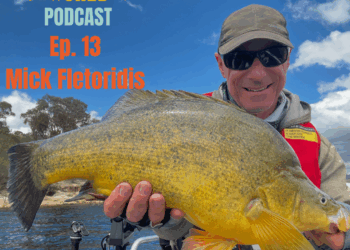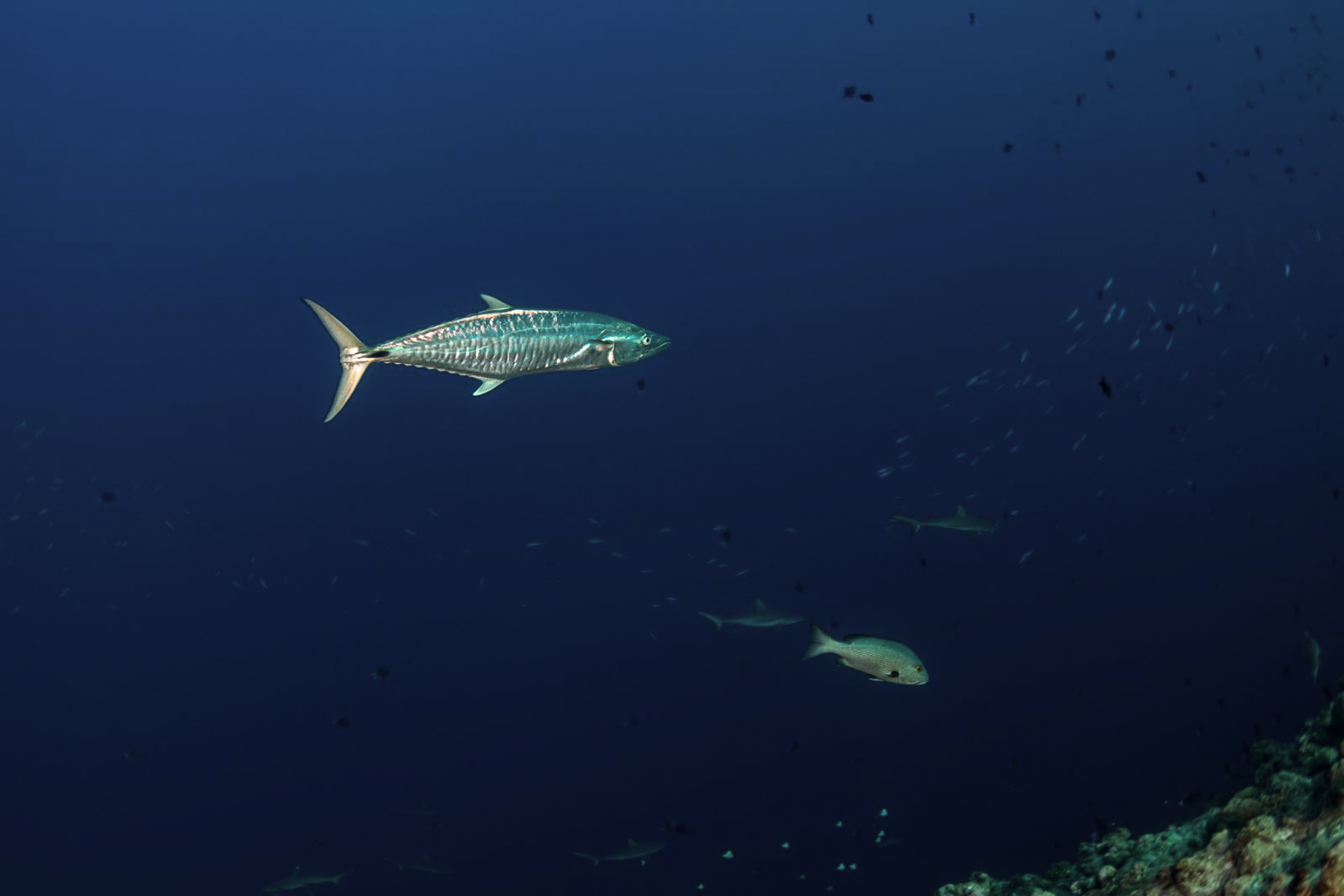
A WEEK ago, before work, I got up early, put a couple of rods in the boat and headed out to one of the closer reefs off the Gold Coast Seaway. I had less than an hour of fishing time and had to be at work before 7.30am. I threw a pair of hard bodied minnows out the back (a Halco Laser Pro and a Nomad) and trolled a few hundred metres before the Halco was eaten and the reel screamed off. It wasn’t a huge fish but I soon had a nice 8 kilo Spanish mackerel aboard. 10 minutes later I caught another fish that was slightly smaller. On the sounder I could see the vertically stacked schools typical of Spanish mackerel, one of the most popular species of fish to chase in southern Queensland. I signed off at the Gold Coast Seaway at 6.30am and was early for work.
I’ve chased Spanish mackerel for over thirty years, and while each season is different, I’d say we catch just as many mackerel now as we did three decades ago, and in no way am I a gun mackerel fisherman. Mackerel are a wonderful fish to catch, they have a screaming first run, respond to a wide variety of methods and are delicious to eat. The frames and heads make excellent crab bait, making mackerel a very “high yield” fish. In my local waters mackerel, both spotted and Spanish, arrive off the Gold Coast in December and stay until early June most years. Each season sees a variable run of fish and things such as bait schools, freshwater run off, northerly winds and water quality all effect mackerel. It isn’t unusual when conditions off the Gold Coast are unfavourable to see the mackerel schools move further south without stopping. Sometimes there aren’t many mackerel off the Gold Coast while ports in NSW enjoy an excellent season. They are a fish of the inshore reefs in these parts, I’ve never caught on in a water depth more than fifty metres.
Much to my surprise I saw some recent research by Queensland fisheries that concluded the population had dropped to around 17% of its baseline population estimated from 1911, and unless something is done the fishery will collapse as it is unsustainable. That is pretty hard to believe when we’ve just enjoyed three good mackerel seasons in a row chasing a fish that is highly migratory, moving south down the Queensland coast into NSW each summer. Now Queensland fishermen are definitely not a quiet bunch and there is a big outcry that this population assessment is fundamentally flawed, the methodology is wrong and there is some kind of “green” agenda at play. Over the years I’ve chased quite a few species that aren’t nearly as abundant as they used to be. Snapper are a good example of this, and we now have a closed season. Similarly, big Samson fish and amberjack are a lot harder to find. But the one species that the population seems to be the same as it always was, based on personal catch rates, is Spanish mackerel.
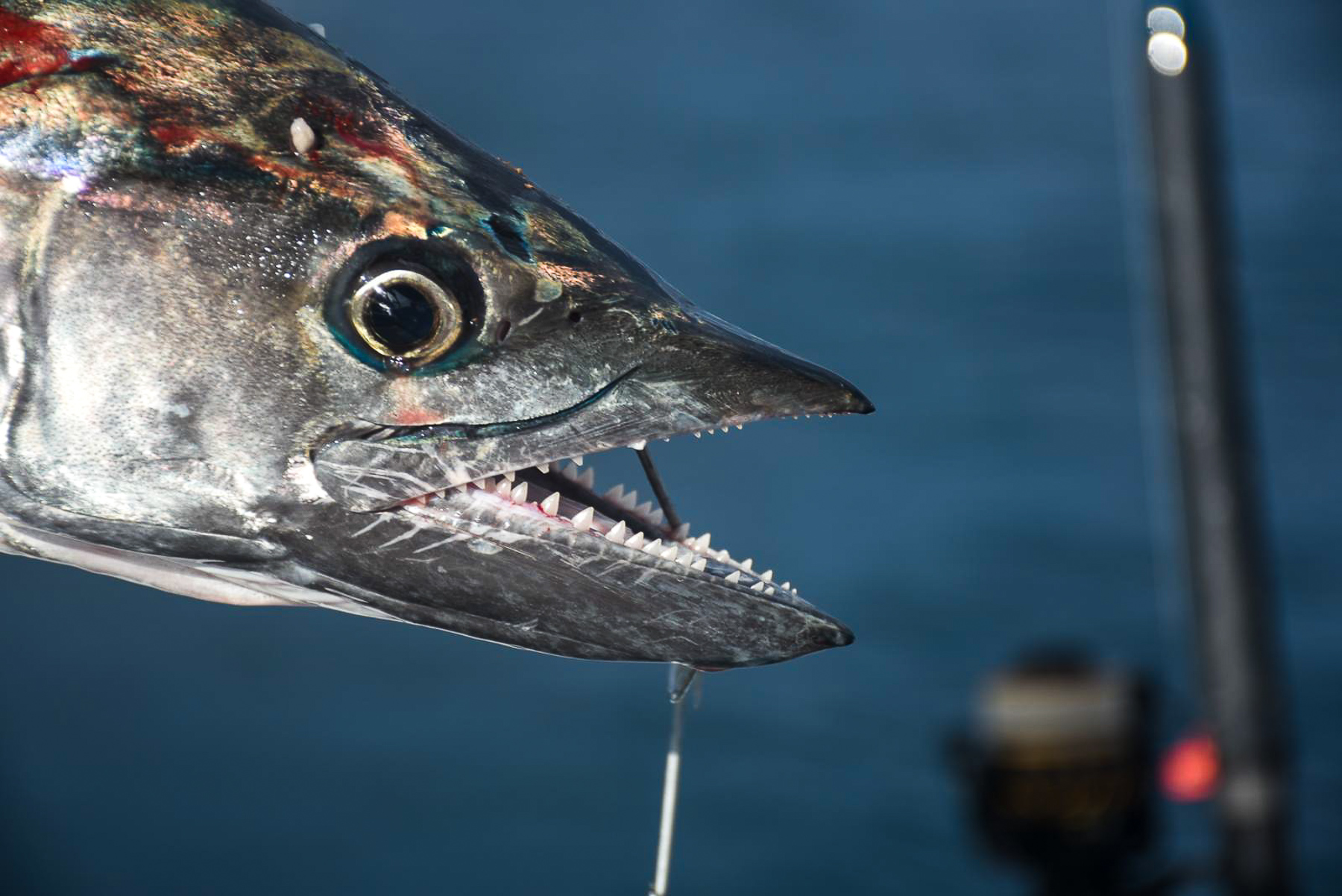
The methodology used to come up with the 17% number has been peer reviewed by another author who agrees with the conclusion. There’s a lot of scientific rigor in this study but that doesn’t mean its conclusions are in fact correct. Counting populations of a fish species that is highly migratory is difficult at best, and there are many variables. In reading the study it is very clear that the estimation of fish populations is a very inexact science. Coming to the conclusion that the biomass is perilously low is based on a number of critical assumptions.
The first thing I noticed in this paper was that while the Queensland commercial catch has dropped since 1990 the recreational catch assumed in this paper has remained relatively constant since around 2005. The assessment of the recreational catch in Queensland has been done by boat ramp surveys between 2016 and 2020 assessing mackerel catches at boat ramps throughout Queensland. The validity of these surveys is difficult to assess. While from 2016 to 2020 questioning asked specifically about Spanish mackerel, prior phone surveys asked about “mackerel”, which may include spotted mackerel, Queensland school mackerel and broad barred or grey mackerel. These types of surveys have an inherent bias and cannot be blinded. There is also no control data as to recreational catch and a number of years are left out of the data and the numbers are extrapolated across as trend lines between “before” and “after” assessments. There is also a lot of “drop out” of participants over time, which greatly effects the ability to assess the trend in catches of individual anglers. The number of boat registrations is also looked at when it comes to assessing recreational catch.
The concept of increased “fishing power” has also been applied in the assessment of recreational catches. This concept makes the assumption that due to technology and improved fishing methods anglers are more likely to catch more fish. I doubt this actually applies to mackerel fishing, as the “old school” methods of slow trolling rigged baits is still far and away the best method to use, and that hasn’t changed in over 40 years. The assumption that there is now a greater recreational catch as the catch rate per effort is higher definitely seems far-fetched to me. The rhetoric that anglers catch just as many mackerel when the stock is depleted because they are more effective is extremely questionable. When you consider that the bag limit is three fish over 75cm and a boat limit of six fish, the concept of increased “fishing power” becomes less relevant as the individuals catch rate is limited by the bag limit.
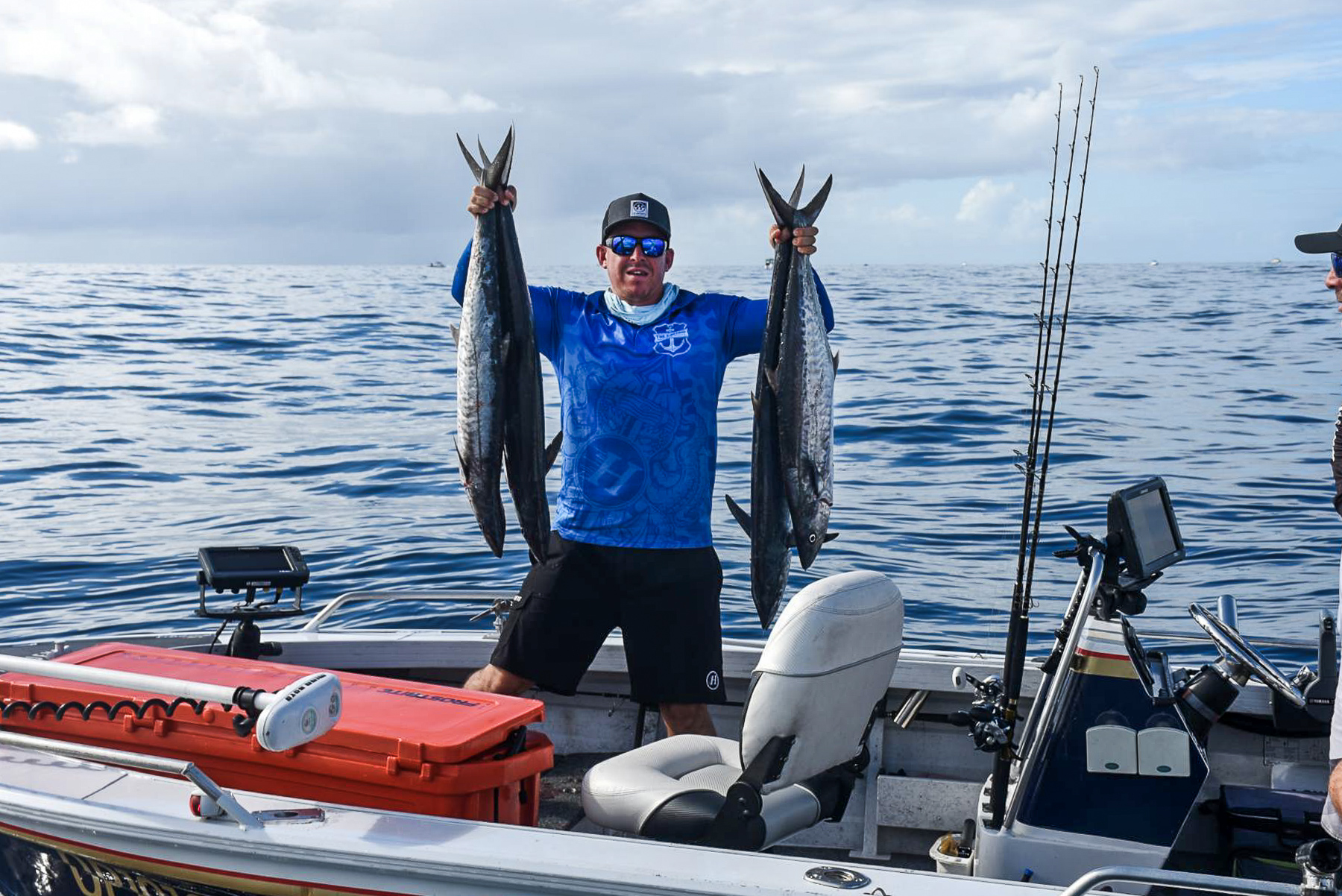
The Spanish mackerel fishery in Queensland has been regulated for some time. The legal size was established at 45cm in December 1976, and increased to 75cm in 1993. Commercial logbook data began in 1988, and recreational anglers were prohibited from selling any of their catch in 1990. The bag limit of 10 Spanish mackerel per angler was established in 1993 and dropped to three fish per angler in 2003. In 2019 the limit was amended to have a maximal catch of six Spanish mackerel per boat, with the exception of charter vessel. As you can see, this has been a highly regulated fishery in Queensland.
Recreational catches after 1997 were estimated by annual commercial catch rates multiplied by mean fishing effort. Mean effort was calculated from the known survey catches divided by their annual standardised catch rate. (From page 10 of the report). As you can see, this makes a large number of assumptions, and fails to take in weather, seasonal variation, floods and unfavourable sea conditions. As an example, I can guarantee that the recreational catch of Spanish mackerel caught off the Gold Coast in January and February 2022 will be a lot less than the previous three years for those months as the number of fishable days has been significantly less due to rough sea conditions and flooding.
The commercial mackerel fishery in Queensland is largely based in the north, between Lucinda and Cairns. These operators work from dories attached to a mother ship and the fish are line caught on both baits and lures. Spanish mackerel are known as an “obligate transient aggregator” meaning their spawning behaviour is generally related to specific reef locations. It is these areas that are targeted by commercial mackerel boats. Each of these operations is linked to an individual quota holding. As of April 2021 there were 240 licensed operations for the purpose of being a primary line fishing operation. Quota is transferable between licenses. 53 of these licenses now hold no quota.
While it is clear that the commercial catches from the northern part of this commercial fishery have dropped since 2004, it is important to understand that as of the 1st of July 2004 the Great Barrier Reef Marine Park Authority (GBRMPA) revised the reef zonings and expanded the Representative Areas Program (RAP). While the zoning process gave consideration for the importance of Spanish mackerel fishing and left five key reefs still open to fishing, it effectively denied commercial operators access to large potential fishing areas and lead to more concentrated effort on the five key reefs still open to commercial fishing. 40% of the Queensland commercial catch of Spanish mackerel comes from the port of Lucinda and this catch has dropped since the reef zonings came into effect in 2004.
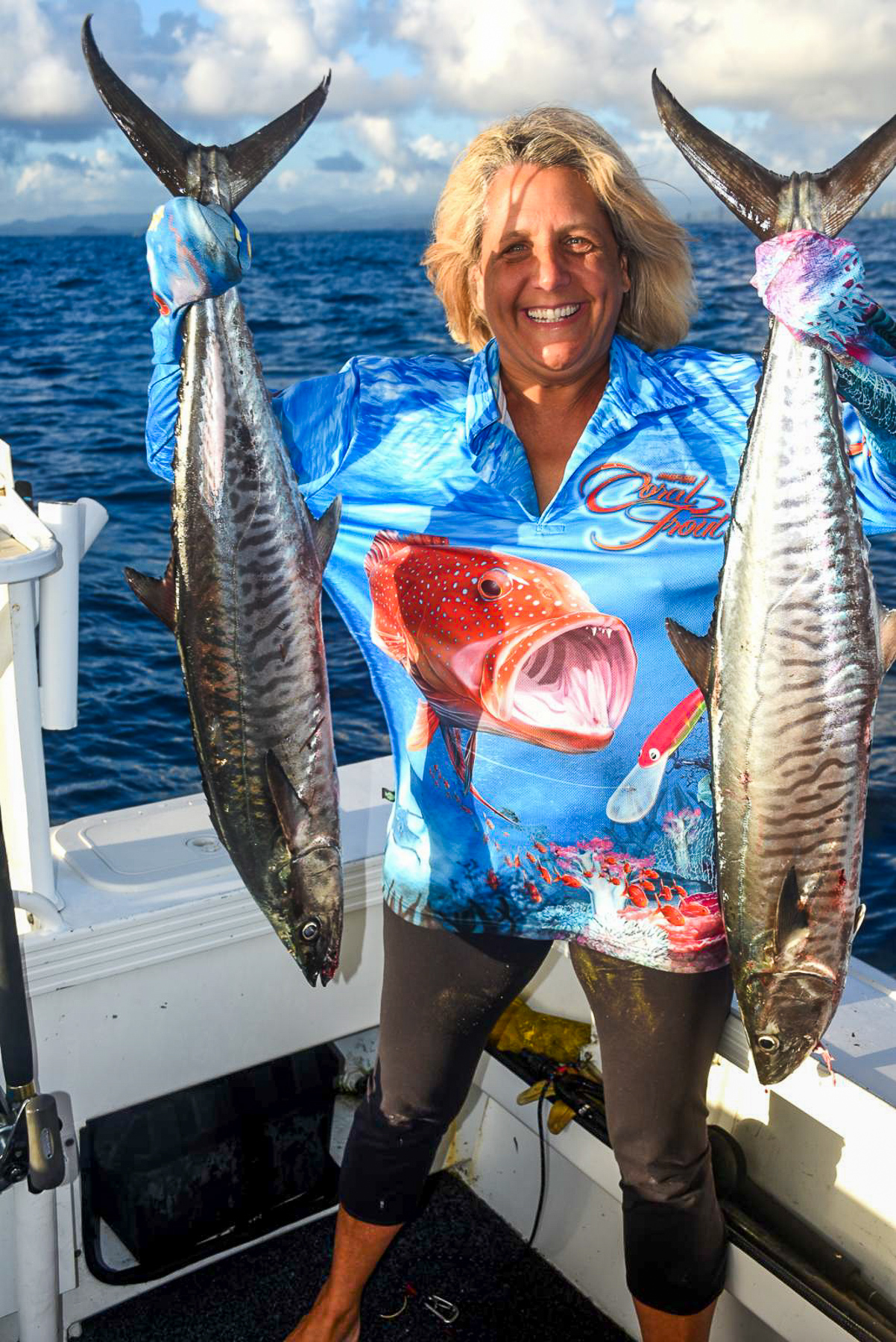
in Queensland.
One factor that I cannot understand is that all studies of Spanish mackerel biomass make the assumption that in 1911 it was 100%. All the displayed graphs show deterioration of this biomass reaching 60% in the late 1960s. During this 50 year period there was little recreational effort and the commercial fishery was small and localised. The problem I have with this assumption is that between 1911 and 1960 there was actually no population assessment done on Spanish mackerel, and the 40% drop in the biomass was assumed, anecdotal and probably incorrect. This early assumption basically means everything that is concluded as to the percentage biomass available is based on looking at a 1911 figure that is erroneous. In this current paper 8 models were run, covering a number of assumptions. These eight runs of data produced estimates of unfished spawning biomass at between 14% and 57%. This very wide variation makes me question the validity of the methods used. While most runs of data were at the lower end of the biomass level, the huge numbers of assumptions made all relate to the assumption of a 100% biomass in 1911!
Commercial catch data from 1988 until 2020 shows a decline in catch rate down to about 62% of the 1990 level with a lot of seasonal variation. This is fairly hard data, not based on assumptions and has a 95% confidence intervals displayed on the graph. I think this data is much more solid and probably reflects the likely change in biomass much more accurately.
The question remains as to what the Queensland government is going to do about the probable decline in the biomass of the Spanish mackerel. Personally, after studying the paper carefully, I find that it makes an enormous amount of assumptions that I think just don’t stand up to scrutiny. With many thousands of angry anglers feeling they are being potentially robbed of catching a fish they love to chase the outcome of this paper will become greatly politicised. This is particularly so when the catch rates of Spanish mackerel in south east Queensland and NSW have been excellent over the past few years. It is very likely we will see closed seasons, reductions in bag limits and other actions taken that will leave recreational anglers feeling disenfranchised and angry. In addition, it is hard to apply catch and release methods to Spanish mackerel as they are a dangerous fish to handle and de-hooking them in the water is quite difficult. In this paper the assumed mortality of mackerel caught and subsequently released was stated at being 50%, again being an assumption. Commercial operations targeting spawning aggregations in the northern part of the Great Barrier Reef will probably be forced to have a closed season. Closed seasons would be incredibly difficult to manage as this is a population of migrating fish that breed between September and November in the offshore waters between Cairns and Lucinda before migrating south, appearing on the NSW/Queensland border in January.
There will be a lot of debate in coming months about the potential collapse of the Queensland Spanish mackerel fishery. It is important to realise that the new methods used with the current stock assessment were different to the old methods, and the quoted number is that only 17% of the total biomass of Spanish mackerel currently exist. Personally, I think the conclusions of this paper just don’t stand up to scrutiny and are based on a huge number of assumptions.
This article is available in the May 2022 edition of Fishing World magazine. Subscribe now and save 30% HERE.














